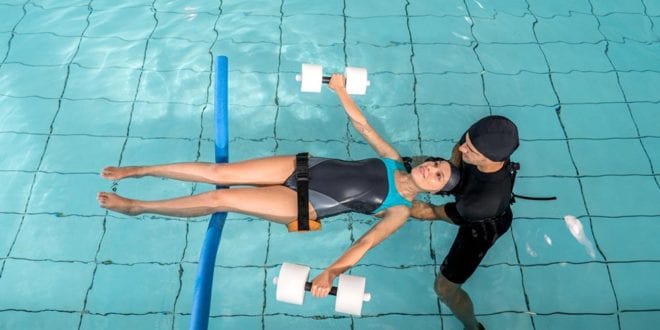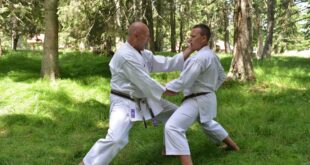If you have a hot tub in your backyard or you are thinking about getting one for you and your family, you have probably heard the word hydrotherapy being thrown around. It may something like something very complicated, but it is actually quite simple. It means to exercise while submerged in water which can help you both physically and mentally, depending on the exercises you do.
So, if you are looking for alternative ways to treat your chronic pain, your anxiety or if you just want to get in better physical shape, then you should definitely consider hydrotherapy. You can benefit a lot from it, so there is no reason why you should not try it.
History of hydrotherapy?
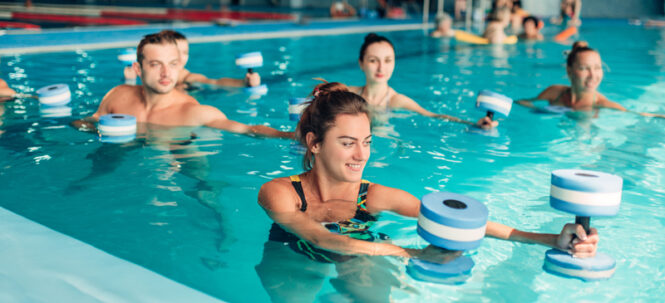
Hydrotherapy uses the healing properties of hot water to heal the mind and body of a person, or it can be used to maintain a healthy life. This type of therapy has been around for hundreds of years. It dates back to ancient civilizations such as the Chinese, Egyptians, and Greeks because all of them realized what kind of healing potential hot water can have. This was then recorded in many other civilizations such as the Roman Empire. After the spread of Christianity, public hot baths were not as common, so there weren’t any in-depth records about people practicing hydrotherapy as a way to deal with chronic pain.
However, a few centuries later, it quickly became popular again and most people from the upper class in the 17th, 18th and 19th centuries would enjoy such baths. Princes and kings after long days of travel or after a battle would stay in hot water for hours and hours to speed up their healing process of the wounds.
What is it?
You might not be so familiar with this term, but that is because a lot of countries have different terms for this kind of therapy. A lot of countries even have natural hot water sources that are used in the exact same way as hydrotherapy is practiced. It is also commonly used by athletes and older patients to deal with swollen ankles, knees, arthritis, and other rheumatic pain.
Keep in mind, this is not just about sitting or swimming in a pool. There are special exercises you will need to follow inside of a pool where the water temperature is at least above 33ºC. You will also need to be guided through the exercises by a physiotherapist who is specialized in this aspect. They will need to carefully monitor you to analyze your range of motion, how much in pain you are, and how much you need to stretch, move and so on. It is all about doing these slow and controlled movements that will relax your muscles and your muscle joints.
Is Spa therapy the same as Hydrotherapy?
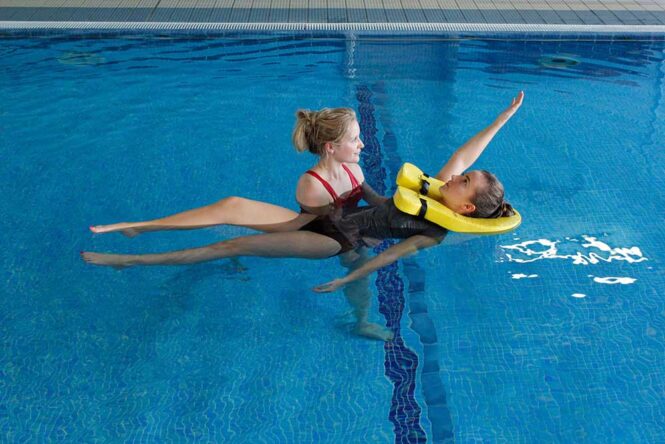
This heavily depends on the country you are located in. Some believe it is the same while others do not. Some spas will only offer you to relax in hot water, while other spas will have specialists designated to guide you through the right hydrotherapy exercises to help you with your pain.
Some believe that natural hot water sources may have much more effective healing properties because of the minerals found in it.
Benefits of the therapy
No matter if you are young, old, middle-aged, or even an athlete you will experience the benefits of the exercises. Any kind of ache or pain you have in your joints, ankles, and muscles can be completely removed with the right movements.
According to www.physioinqpenrith.com.au, hydrotherapy can help you with disc and spinal injuries, swelling, it can increase your range of motion, can better your immune system, may increase metabolic rate and so on. It can also deal with conditions such as Osteoarthritis, Spondylitis, Cerebral Palsy, bone fractures, and some neurological conditions.
Even if you are not in any kind of pain you can do it as a way to relax and let off some steam. Some people describe the feeling like you are getting a massage, so if you have had quite a few stressful days at work, why not try it out?
After you have finished with your session you will probably feel quite tired because all of your muscles have been moving around, but after a good night’s sleep, you will feel better than ever, energized and ready to take on anything.
When you enter the hot water you feel like all of the weight on your neck, back and muscles are completely gone. This body of water is now holding all of that weight that you have been carrying by yourself for your whole life. When you start with the movements and the exercises you are increasing the blood flow to your extremities, and all of your muscles will start relaxing.
How difficult are the exercises?
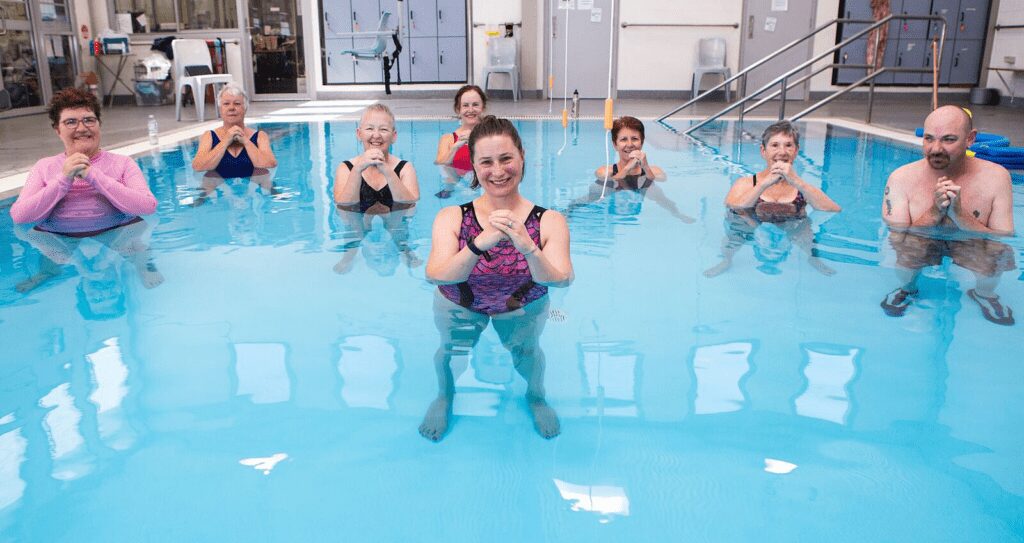
Normally, you can’t just jump into the pool and expect that you do not have to do anything while reaping all of the benefits. You will still have to spend some time analyzing the exercises they are teaching you. Before you get into the hot water pool try them out outside and so a few stretches. While doing these exercises you can easily spot where you feel the most pain and memorize those spots.
After you get into the pool then talk with your physiotherapists about the locations where you feel the most pain or where you feel “tangled” and they can guide you through which exercises will be best to target those exact problems.
Since the movements are quite simple so that anyone can follow, you will not have any difficulty following or doing them. If you want more activity in your muscles you can just increase the intensity of the movement and the effectiveness will increase too.
If you have trouble understanding the movements, wait for other people to get into the pool and then follow their moves. You will catch up pretty fast with the help of others, surely.
 Imagup General Magazine 2024
Imagup General Magazine 2024
